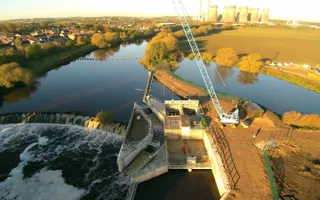Over the last few years hydropower generation sites have been installed at a number of our river weirs, mainly in the north east. These sites are quiet, unobtrusive, and always incorporate a state of the art fish and eel passage, that will help salmon, eels and other migratory fish to safely navigate the weir.
To develop a hydro site needs a large multi-million pound civil engineering scheme to build it. This is only possible following extensive consultation and gaining the necessary licences/permits from the Environment Agency. The site also has to maintain upstream water levels so there is sufficient depth for navigation, without impacting on likely flood levels in the river.
This is where the water management team come in. We need to make sure any third party operations on our weirs do not significantly increase flood risk, or impact on levels for navigation, which we have a statutory duty to maintain.






